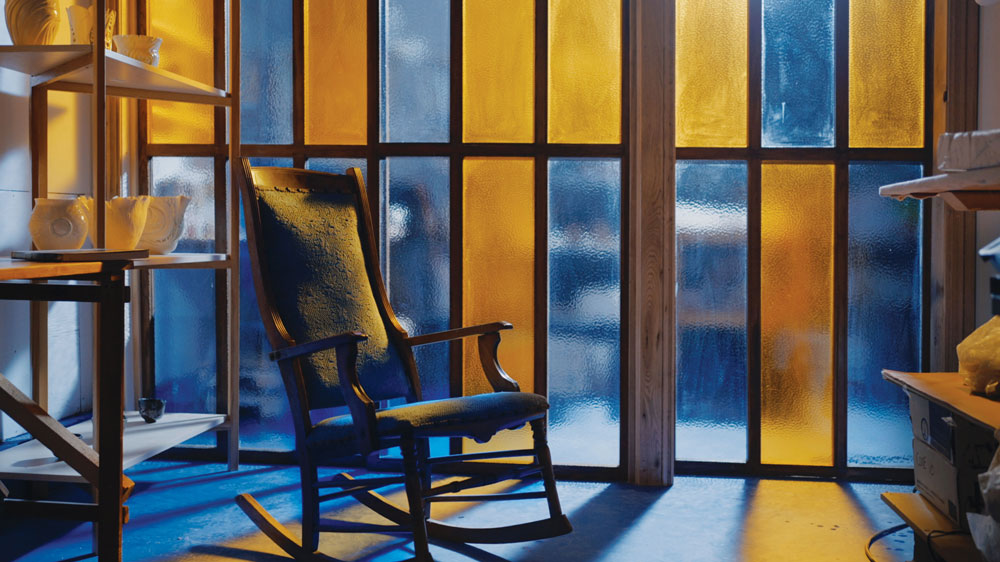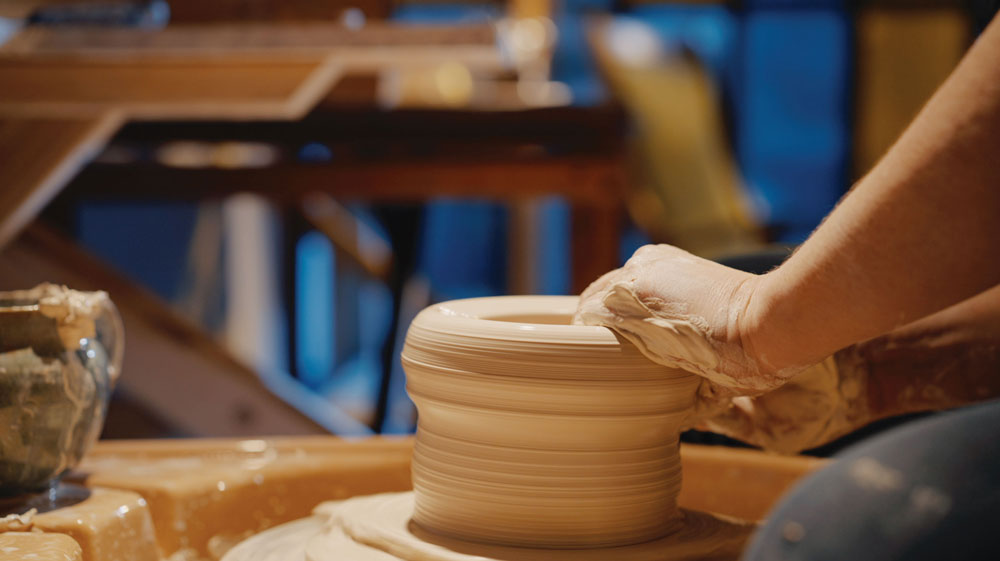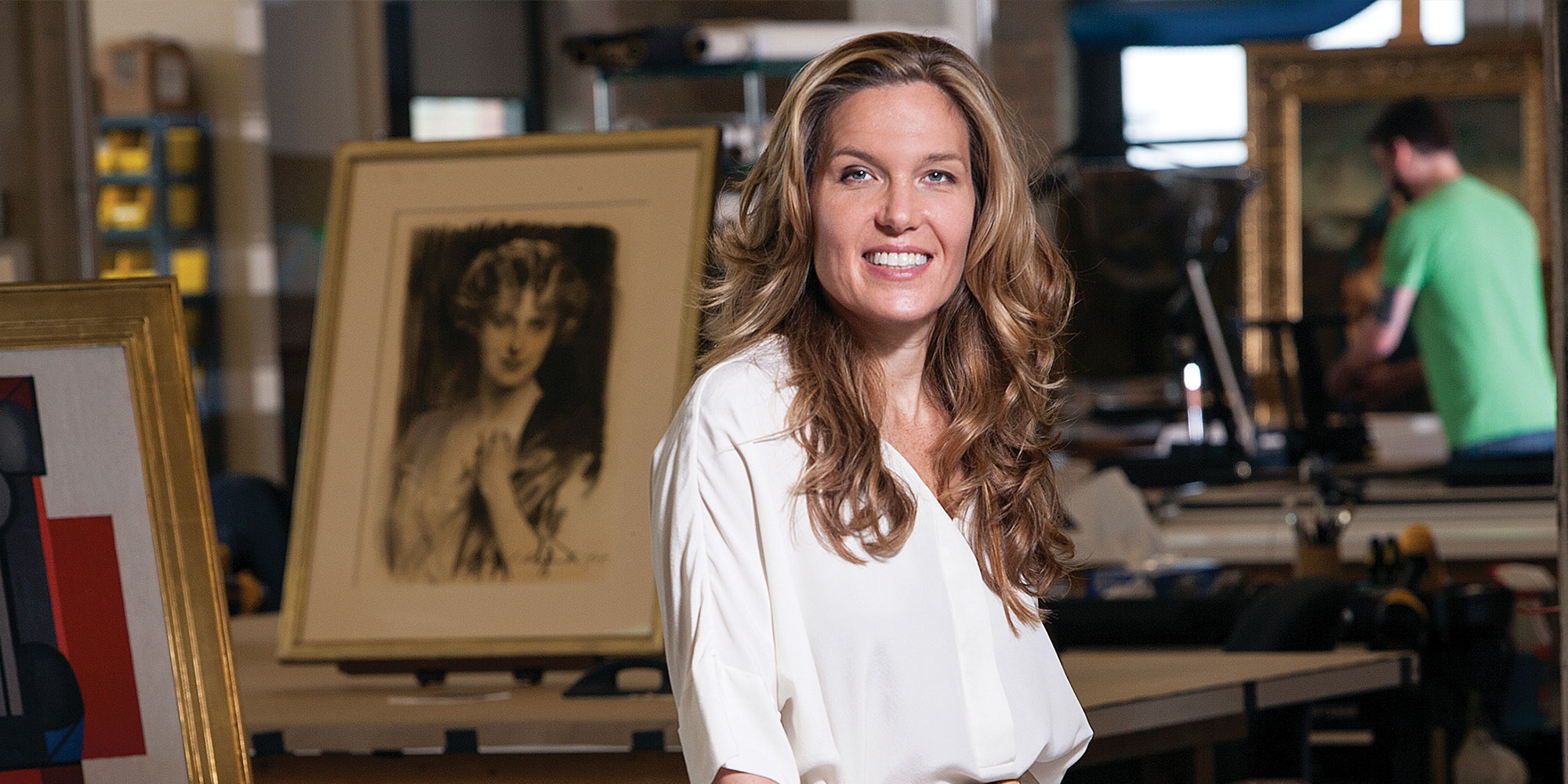
Let the Light In with Translucent Porcelain
Canadian ceramic artist Marie-Pierre Drolet crafts beautiful pieces infused with light, beauty, and philosophy.
- Text by Charlotte McManus
- Photography by Evan Ning
“Beauty and light are divine attributes. If you let beauty sink in, it can transform you. The beauty of my porcelain comes from the light,” ceramic artist Marie-Pierre Drolet says.
A master of translucent porcelain, the Canadian artist crafts delicate sculptures with an ethereal quality, infusing otherwise solid pieces with radiance. Luminous tiles channel sunlight through gossamer-thin surfaces and intricate cut-out patterns, while ornate vases flicker and glow, lit from within by candles.
Divine spark
Drolet applies a philosophical approach to her creative process that’s as elevated as the forms she shapes on her potter’s wheel. For her, translucent porcelain offers a means of transcending the distractions of today’s materialist world and communicating with something altogether higher.
“My belief is that we all have a light—a divine spark—buried inside of us that we need to free,” Drolet says. She likens her translucent vases to human beings, saying that both have the ability to shine from within, given the opportunity.
“When people see my porcelain, I hope that their beauty and light will awaken something within themselves, so they feel the need to get that connection back. I want to speak to people’s souls,” she says.

Transformed by nature
In addition to translucent sculptures, Drolet makes utility pottery such as cups, bowls, and dishes, as well as special commissions. The themes of nature and the elements frequently recur in her work.
“Pottery is one of the only arts that uses the four elements: water, earth, air, and fire,” Drolet says. “Fire is especially fascinating because it’s in fire that the matter is transformed into something new. Something magical happens during the process of firing.”
Born into a creative family, Drolet grew up immersed in the arts. Her father, also a potter, taught her the basics when she first expressed an interest in the art form at the age of 18. She has continued her artistic education ever since, frequently seeking out new teachers to hone her craft.
Today, Drolet lives in an old schoolhouse near the village of Wakefield, Quebec. Her house is just a few doors from her remote woodland studio, so the road to her next creation is never far away.
Alongside teaching students of her own, in recent years Drolet’s projects have included a collaborative artist residency at PAF with artist Sally Lee Sheeks and an exhibition at MRC Papineau.
Drolet also starred in the Magnifissance film series, Joy in the Making. Titled Let the Light Shining Through, the short documentary about her craftsmanship depicts the ceramic artist creating her otherworldly porcelain forms, while also presenting her philosophical mindset.

Balancing act
Much of Drolet’s artistic approach is guided by an intriguing sense of duality. Her pieces interweave elements from the wild, free-flowing forms found in nature and the complex, ambitious imaginings of the mind. In this way, Drolet demonstrates a balance between the outside world and the rich, inner life of human beings.
“While nature has its own organic way of creating beauty, the human mind—the face of the conscience—can imagine really complicated and intricate things. These are two aspects of the spiritual way of thinking I bring to my art,” she says.
Linking this back to translucent porcelain, we see Drolet’s enduring fascination with the natural world lending an organic fluidity and movement to her numerous pieces. The Fire Egg appears almost to crackle with live flames, while the serene dances of celestial bodies come to life on her Cosmos vase. In contrast, the Places and Light tile series features much more structured geometric patterning, complete with tessellating motifs and ornate, decorative detail.
“My vases are less planned than the tiles. They’re more intuitive and organic; I go with the flow. That’s why the curves are so free and dynamic. Whatever I’m working on, the more clay that I take off, the thinner it is, and the more translucent it will be,” Drolet says.

For the artist, creative inspiration may strike during a tranquil stroll through the remote forest surrounding her studio, or within the quiet, cloistered confines of a church. Passionate about art and mythology, she is also fascinated by archaeology, often leafing through books about ancient tools, weapons, and ships in search of aesthetic stimulation.
Drolet’s work includes a ceramic tile portraying the myth of the Norse god Odin and his two ravens, one signifying thought; the other, conscience. In another creation, the form of a fox is decorated with Celtic patterns.
“I’m also interested in sacred geometry,” she says. “For example, my Salem porcelain tile depicts a replica of stained glass from a church in Germany.” Decorated with a detailed symmetrical pattern, the tile recreates the resplendent effect of stained glass when held up to the light.
Go with the flow
Like any ceramicist, Drolet knows that pottery is temperamental by nature. No matter how skilled or experienced the maker is, due to the natural forces that define them, ceramics always bring surprises.
Unexpected results could include a form changing shape while drying, or a glaze not reacting as desired during the firing process. Once in the kiln, creations are obscured from sight and heated to a searing 2,200 degrees, putting them at the mercy of the elements.
“Pottery is alive—clay is alive. It’s important to respect that. The material has something to tell, and if you resist listening you won’t succeed,” Drolet says.
“During the process, acknowledge that you don’t control everything. As I tell my students, don’t be attached to the results—be attached to the process.”
Drolet takes her own advice seriously. She feels that by relinquishing her ego and truly embracing the material, she becomes a more receptive conduit by which to experience the Divine.
“The work transforms me by being open, letting the force speak, and channeling the divine energy in the world back into my piece,” she says. “I’m trying to reach perfection, both in my work and in myself. It might be that I won’t attain it, but to try is a beginning.”
Inspired for a Beautiful Life
Related Articles

A Lifelong Journey of Creating Beauty through Porcelain
Behind Kinzangama Kiln’s intricately painted Kutani ware is a family’s pursuit of perfection and respect for tradition.

Healing Travel
From meditation to holistic spas, enhance your well-being at these six wellness treatment destinations.

A Landscape of Leather
A royal descendant creates a new dynasty of art by applying traditional Chinese painting techniques to leatherwork













